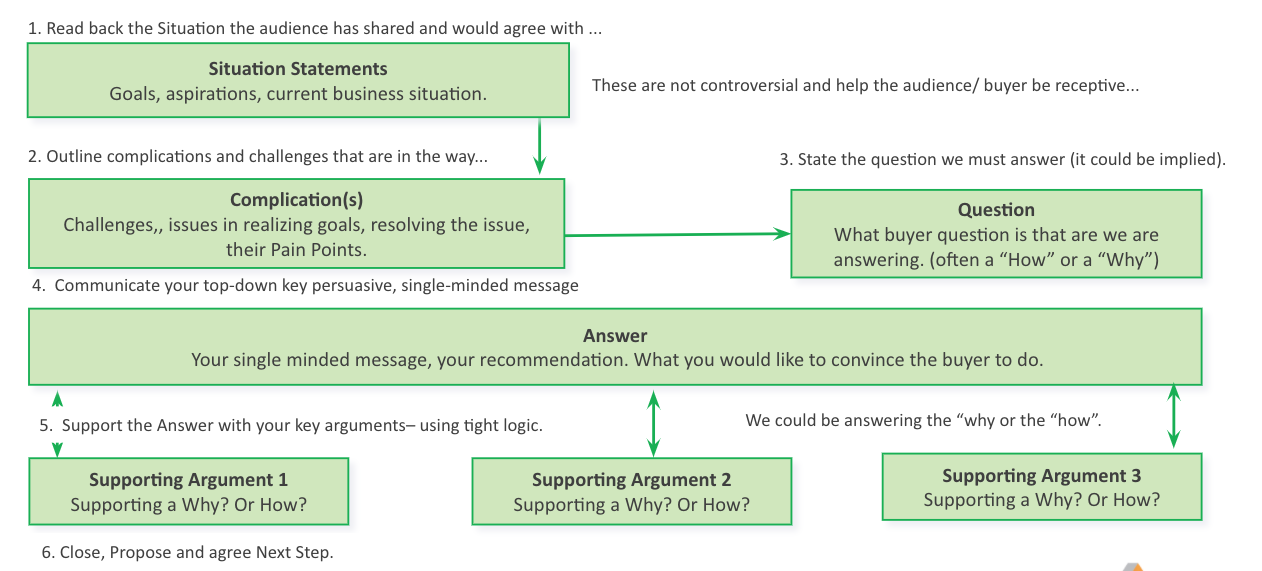The Persuasive Communication method is a top-down approach that helps deliver key messages in a logical way. It is also helpful within an organization to collaborate on a pitch or presentation. For example, we often ask each other at Revenue Architects, “What is the S-C-Q-A?”.
The framework helps capture the essence of the situation, the complication (or challenge) that stands in the way, to pose the key question (or implied question) that the buyer has on their mind, and deliver the answer as a single-minded message – or governing thought. Then you can provide 3 or 4 supporting points as evidence supporting the governing thought.
The S-C-Q-A Model
Persuasive communication is a structured way to position and communicate that ties your answer or proposed idea – to the situation and complication that your buyer is facing and that they want to overcome.

Here is an example using the model in a way designed to convince you that you should adopt Persuasive Communications. To do this, I will use Situation, Complication, Question, and Answer which is the structure that will help guide the delivery of your messages. SCQA can also be used in more subtle ways, but to illustrate how the logic works, I will use the structure explicitly in the following argument about the impact of Persuasive Communications:
Audience:
A business leader who would like to implement a standardized approach across her sales organization that helps improve the way they present solutions and value propositions to buyers.
Situation:
Communicating a clear and persuasive message to customers is critical in a sales and service delivery and when presenting a solution or proposition. You recognize the need for your front line staff to deliver ideas in a clear and directed way that speak to the issues and challenges their audience is facing. If as an organization, you can more effectively communicate your messages, your teams will more often convince prospects and customers that they should take proposed actions increasing sales effectiveness.
Complication
Unfortunately, today your team’s communication lacks consistent clarity and structure. Sales teams often meander through client conversations without delivering a clear and persuasive argument backed by logic. Your corporate presentations miss the mark in delivering a single-minded message and instead offer a reflection of the company itself – without an adequate focus on the audience. With the proliferation of online media and brand messages, it is even more important to differentiate and communicate in a clear and compelling way. In order to deliver persuasive communications, your writers and presenters need a structured communication approach that is easy to remember and that they can apply day-to-day.
Question
How can we improve the way we communicate to better engage and convince our customer audience and realize better results?
Answer
Adopt a structured top-down approach to help teams deliver more persuasive communications that drive results.
How? We can do this by following three strategies:
- Formally introduce Top-Down Thinking and Structured Delivery into your organization using the S-C-Q-A approach. Use workshop training, hands-on practice, and real-world examples.
- Reinforce the approach by applying structured communication techniques in your day-to-day interactions – including internal emails, customer presentations, blog posts and marketing communications.
- Ensure adoption across the organization and lead by example, recognizing the impacts that come from applying the approach.
